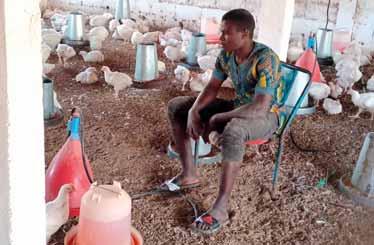LOOK-THINK-ACT
Using the signals Use what you see to improve your flock management. A genuine signal will be repeated. Think about what you are seeing and how it relates to the circumstances: does it happen often, at different times, to different birds, on other farms? Go and see for yourself or ask people. Know when risks are likely to occur and keep one step ahead by eliminating them or being extra alert if you are expecting them.
ct
ed
Vulnerable birds There will always be some vulnerable birds in a flock, such as poorly developed ones. They will be the first to suffer from disease, lack of water or other shortcomings. These are also the signal birds: the first ones to tell you that something is wrong; all the more reason to be aware of them. Think about which birds and problems these are, in terms of your particular farm and how you can respond to them promptly. Some birds will also pose a risk to others, e.g. as a source of infection.
pr ot e
What should you do with this bird?
co py
rig ht
This is a high risk bird. It is not able to get to feed and water and will die anyway. But other birds may peck at it or in a hot climate it will start decaying fast, leading to further problems. Take it out directly and cull it.
Signs humans can’t see
Aids such as an infrared camera show what the human eye can’t see. The roof of this house during a cold night has not been properly insulated: the ridge is about 10°C colder than the rest of the roof. Result: it cools down and condensation forms, possibly dripping on the floor. Wet litter is a cause of many health problems.
If you see anything that draws your attention: take a closer look.
8
B roile r Signa ls - Afric a n edi t i on






